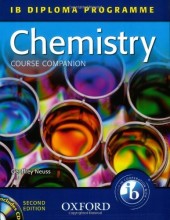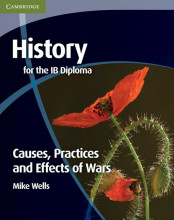Summary: Chemistry : Ib Diploma Course Companion | 9780199139552 | Geoffrey Neuss
- This + 400k other summaries
- A unique study and practice tool
- Never study anything twice again
- Get the grades you hope for
- 100% sure, 100% understanding
Read the summary and the most important questions on Chemistry : IB diploma course companion | 9780199139552 | Geoffrey Neuss.
-
1 Quantitative Chemistry
-
why is erwin so tall?
he is eating alot -
1.1 Relative Atomic Mass and Relative Molecular Mass
This is a preview. There are 3 more flashcards available for chapter 1.1
Show more cards here -
Define the term Relative Atomic Mass
Relative Atomic Mass is the weighted mean mass of all the naturally occurring isotopes of an element relative to one-twelfth of the mass of a carbon-12 atom.
-
1.4 Limiting and Excess Reagents
This is a preview. There are 1 more flashcards available for chapter 1.4
Show more cards here -
What if the process for finding the limiting and excess reagents in a reaction?
- Produce the balanced chemical equation of the reaction
- Determine the number of moles of the reactants by dividing their masses by their molar masses
- Compare the number of moles used in the reaction to the number of moles required by the equation
- If one value of moles exceeds its corresponding number in the equation, it is an excess reagent. If one value of moles is less that its corresponding number in the equation, it is a limiting reagent.
-
2 Atomic Structure
-
2.3 Radio Isotopes
This is a preview. There are 2 more flashcards available for chapter 2.3
Show more cards here -
Define the term radioisotope (radionuclide)
An atom with an unstable nucleus (a nucleus characterized by excess energy which is available to be imparted either to a newly created radiation particle within the nucleus, or else to an atomic electron)
-
2.4.2 Atomic Absorption and Emission Spectra
This is a preview. There are 3 more flashcards available for chapter 2.4.2
Show more cards here -
Describe a continuous spectra.
A rainbow of colors from red to violet.
-
Describe an absorption spectra.
Black lines of specific frequencies against a colored background.
-
Describe the movement of electrons within an atom when it is excited.
When an atom is excited, electrons absorb certain amounts of energy and are promoted to higher energy levels. The electrons are unstable in the high energy levels, so they are demoted back down to the lower level and in doing so release certain amounts of energy (depending on the fall). These certain amounts of energy correspond to certain frequencies of light, thus light is produced.
-
2.4.3 Arrangement and Ionisation Energy
This is a preview. There are 9 more flashcards available for chapter 2.4.3
Show more cards here -
What are the names and shapes of the three sub-shells?
S-sub shell: spherical
P-sub shell: dumbbell shaped
d-sub shell: several shapes
-
What is the electron arrangement of Cu(29)? Write full and condensed.
Cu(29): 1S2, 2S2, 2P6, 3S2, 3P6, 3d9, 4S2
Cu(29): [Ar] 3d9, 4S2
-
Why are there big jumps in the IE graph for Sodium (Na11)
The jumps in IE shown on the graph come from the points at which the outermost electron is in a lower sub-shell: the closer to the nucleus the outermost electron is, the harder it is to remove it.
- Higher grades + faster learning
- Never study anything twice
- 100% sure, 100% understanding
































